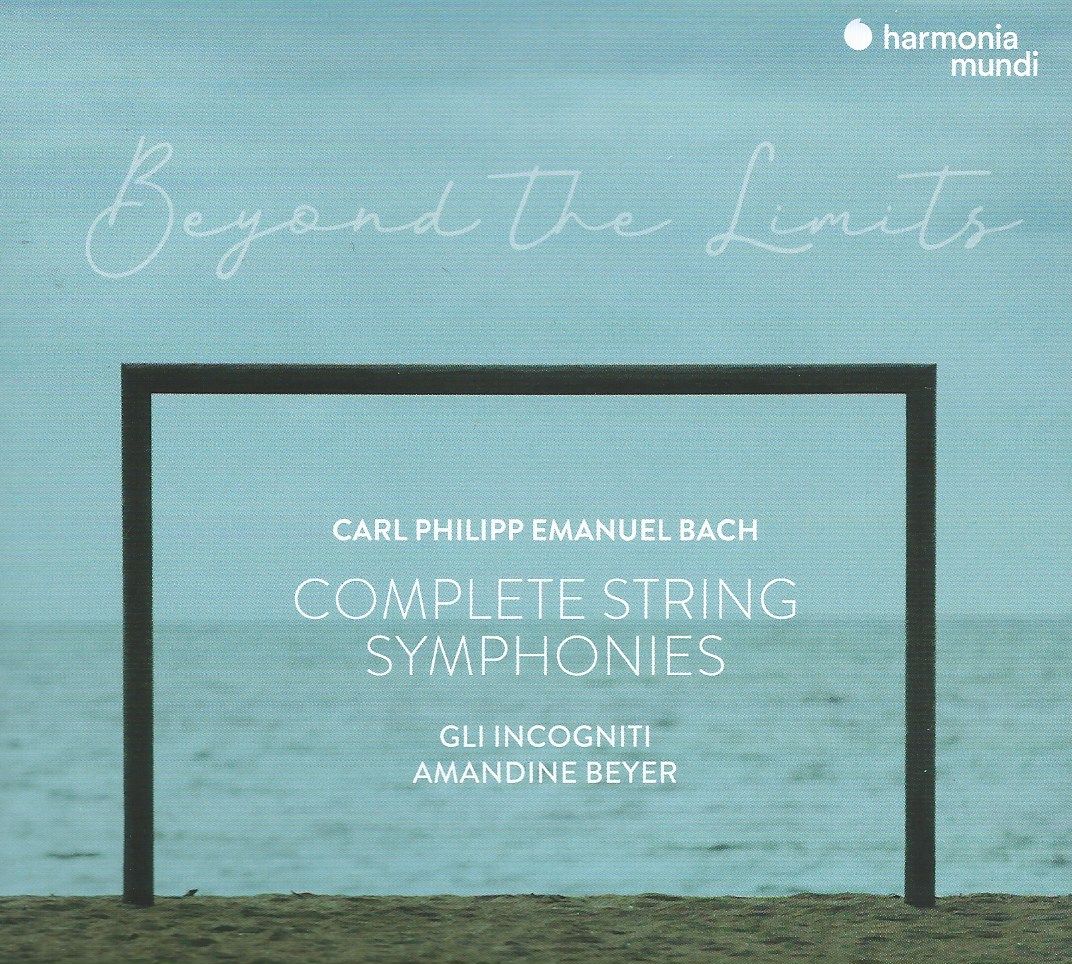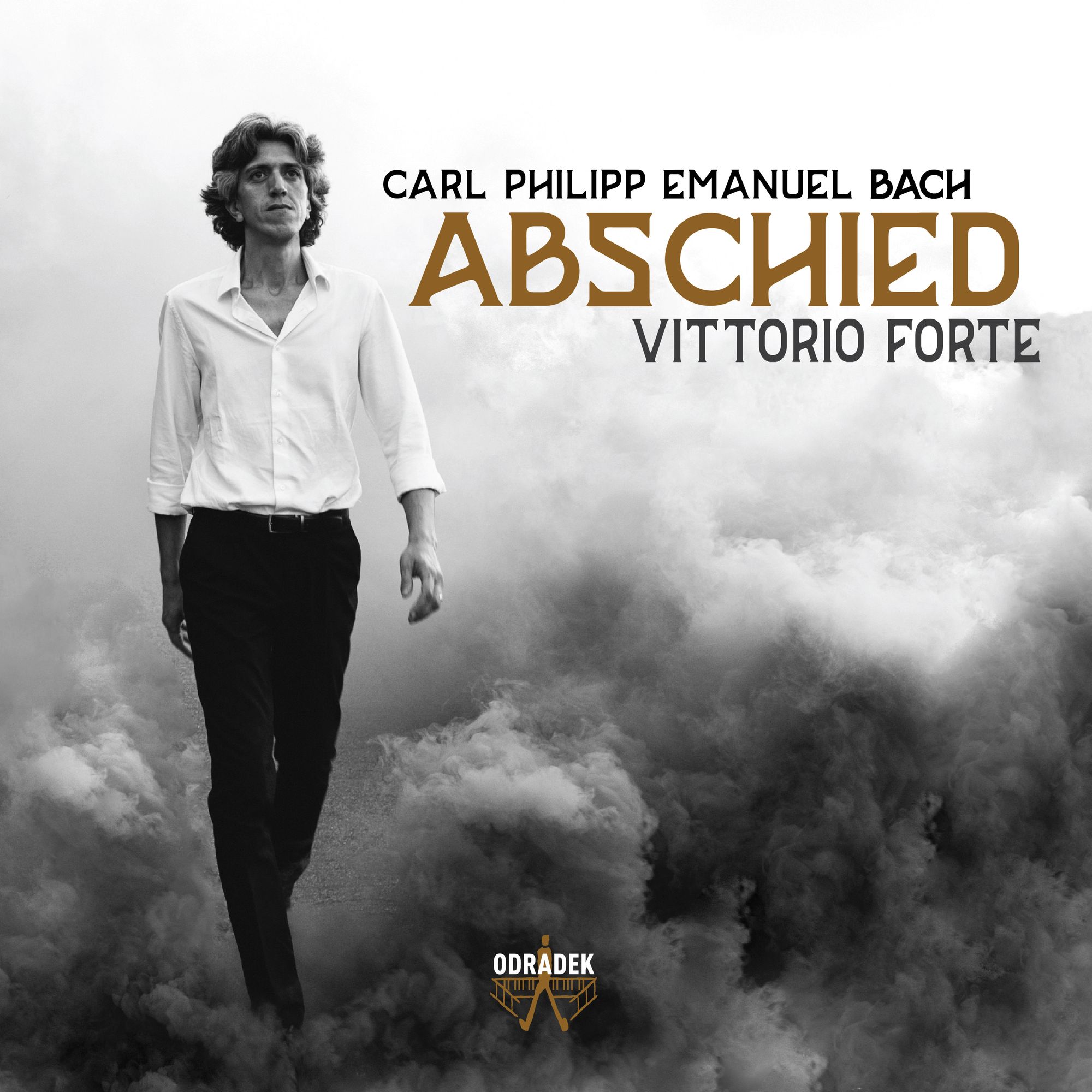The Curious World of C. P. E. Bach

Johann Sebastian had a lot of children - a lot. Most of them unsurprisingly composed to a greater or lesser degree: we think of Johann Christian Bach (J. C. Bach, 1735-82), the so-called "London Bach" most readily perhaps, for, his gallant, supremely well shaped music, itself a rich vein to mine into; or Wilhelm Friedemann Bach (1710-84, best known for his keyboard works, perhaps).
But one stands apart: Carl Phillip Emanuel Bach (1714-88), J.S.'s second surviving son (W. F. Bach was the first), and last born of Johann Sebastian's first wife, Maria Barbara Bach (1684-1720). It is difficult to think of a more individual, quirky, fascinating output of a single composer than that of C. P. E.; I suppose a 20th century maverick-equivalent might be Sorabji. So let's have a look at two aspects of C. P. E. in one, occasioned by two events: the release on Harmonia Mundi of a disc of his Complete String Symphonies by Gli Incogniti and Amandine Beyer; and a disc of his keyboard music (performed on piano) by Vittorio Forte on the Odradek label, brought again to my attention via Forte's most recent release on that label - Gershwin! (the latter review will appear in a future edition of International Piano magazine).
If ever there was an example of how the Baroque ideas of rhetoric apply to music, of how the power of gestures to communicate emotional states may be used, it exists in the music of C. P. E. Bach. The style his music is couched in, the so-called Empfindsamer Stil (sensitive style), is the perfect vehicle for this. And yet he was vital in the transition from the Baroque to the Classical periods, of moving from one to the other.
Here's a video introduction to the Harmonia Mundi disc. Listen to some of the comments by the players of the ensemble Gli Incogniti: "It's like a very varied. colourful painting, full of contrasts," says Amandine Beyer, violinist sand director. Other musicians refer to C.P.E. as "going completely wild," of each bar having a new character. "It's electricity made music" is another quote; "A flurry of gusts followed by a moment of calm"; "C. P. E. Bach is an open door to the unknown; he had discovered ... a thousand colours and a thousand characters"; "there's a crazy side, and a very sweet side too and you never know what's going to happen"; and probably the finest advice: "it is extremely strong music. The more you listen to it, the more wonders you will discover".
Gli Incogniti bring their all to honouring this "crazy" music. There is no better example than this, the Presto finale of the B minor Symphony, Wq 182/5; H 661 (two sets of catalogue numbers are often used in the music of C. P. E. Bach; the same happens in Scarlatti Sonatas, with either Kirkpatrick or Longo numbers). As if the pure energy of the opening isn't enough, keep on listening, to where the notes of a chord layer up in a determined, almost modernistic fashion:
... and for those contrasts, that "sweetness" mentioned above, let's head to the A major Symphony, Wq 182/4; H 660 and the pure gentilité of its central movement, with the. intriguing instruction, "Largo ed innocentamente":
Written in 1773 at the request of the music connoisseur Baron Gottfried van Swieten, the W1 182 set of symphonies is a veritable roll-call of audacious effects; it needs a performance that honours that sense of compositional daring, and Gli Incogniti is just the group. We need an ensemble that takes on hyper-velocity fearlessly and which revels in sudden contrasts, and that's just what we get here. Listen to the breathless first movement of the C major Symphony, Wq 182/3; H 659:
There is only one Symphony not from the Wq 182 group on the disc, a Symphony in E minor Wq 177; H 652 (1756). It is heard here in its version for strings only (that with wind is Wq 178); still fresh and ambitious, it is perhaps less so than its brethren here (although listen to the rolling cauldron of tremolos Gli Incognito bring, and you may wish to disagree).
Let's head over to the keyboard now. And before we go any further, a quick note on instruments; just as with J. S. Bach, there are a great many performances on instruments of the period available. And just as with J. S. Bach, there's an argument for performance on the contemporary piano (it was Martha Argerich on DG who persuaded me of the approach). Perhaps this issue is particularly relevant if you happen to record in a city which houses some of the finest Steinways on the planet. Pescara, home of record label Odradek, is also home to the Fabbrini showroom; for decades, Angelo Fabbrini, piano technician for half a century to Maurizio Pollini, technician for the likes of Michelangeli, Perahia and Schiff, has taken Steinways and brought them to optimum condition. And it is one of those that was used at the fabulous Odradek Studios ("The Spheres") for this recording. The piano technician is Luigi Fusco, who has worked for Fabbrini since 1996.

Vittorio Forte is as strong in his views of C. P. E. as the members of Gli Incogniti in the video above: "Carl Philipp Emanuel Bach is to keyboard playing what Pythagoras is to mathematics," he says, and goes on to call C. P .E. "an initiator, a visionary who evolved throughout his output, ... offering his successors a blueprint for expanding music's emotional horizons" he says.
The first piece is a composed farewell to an instrument. Gifting his Silbermann 1781 clavichord to a pupil, C. P. E. composed this Abschied (Farewell; the full title is Abschied von meinem Silbermannischen Claviere), Wq 66 / H 272:
... and just as Gli Incogniti captured C. P. E.'s gestural way on strings, so Forte finds just the right way with the silences in between gestures (and just the right touch for the gestures themselves) for the Fantasias here. The perfect example, perhaps, is the Fantasia in C, Wq 58/6; H 284 (NB Wq 58 is a publication of two sonatas, two Fantasias and three Rondos, published in Hamburg in 1783):
More overtly Classical is the D minor Rondo, Wq 61/4 (1786):
Forte closes his album with a set of variations that wasn't published until 1938 (!), the theme the famous "La folia". Written in 1778, it is a tour de force of exploration, ending with a Haydnesque wit:
These two discs go hand in hand; what a way to start one's exploration of one ofthe most intriguing and involving of composers!
